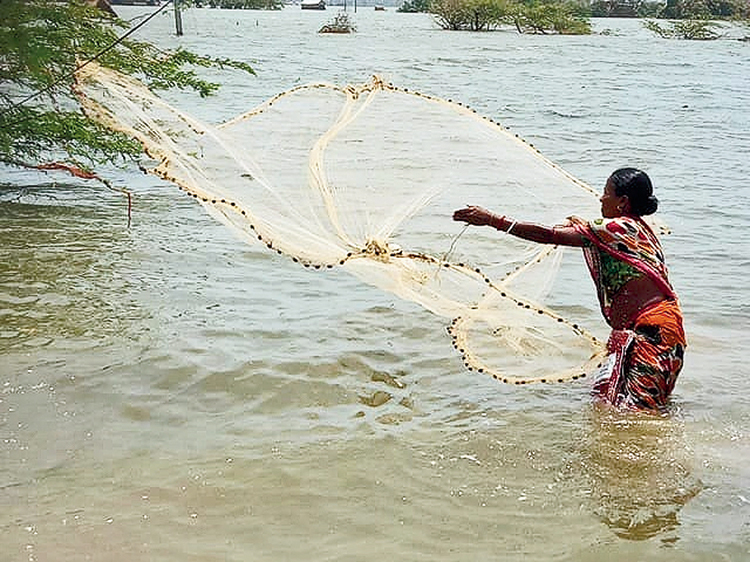Noor Ali Mollah was unable to fathom the losses he suffered as saltwater flooded his pond killing all fish. The Hansnabad resident was trying to cover the face to avoid the obnoxious smell of the dead fish.
In several areas of North 24-Parganas and South 24-Parganas, a few lakh people attached to pisciculture are lost in despair since Cyclone Amphan triggered heavy tidal waves from coastal rivers and salt water inundated ponds and other waterbodies.
While salty water has killed fish in the two districts, tree leaves and branches blown away by the cyclone landed on the ponds to adversely affect fish production in East Midnapore.According to a preliminary estimate, Bengal is likely to suffer a whopping loss of Rs 1,500 crore in fish production owing to Amphan.
Six days after the cyclone, people involved in the fish production in the three districts could not clear the waterbodies of rotten fish because Amphan derailed their lives. “I am confused about what to do now...The cyclone has robbed me of everything. I have no roof over my head. I have to reconstruct my house,” Noor Ali said.
People attached to fish production suffer huge losses in several areas of North 24-Parganas and South 24-Parganas every year as salty water gushes into ‘freshwater’ fishing zones. Canning, Gosaba, Basanti, Basirhat, Hingalganj, Minakha, Hansnabad and Nazat are main hubs of fish rearing in the two districts.
An officer of the state fisheries department said: “The water in the rivers close to the coast is generally brackish in colour because seawater enters during high tides. When the salty water mixes with the freshwater of ponds and bheries because of tidal waves and inundation, fish that survives in sweet water dies.”
In many areas, thatched dams had been made to avoid such inundation. Amphan has damaged a number of the dams, inundating several areas with salty water. The salt water not only killed freshwater fish varieties like rohu, katla and puti but also affected agriculture production.
Arindam Ganguly, a fish trader in Basirhat, said: “It is a double blow for us. Fish rearing had to be suspended because of the lockdown and the cyclone has killed our entire production.”
Mangal Mandal of Sonakhali village near Basanti said: “All ponds in our area have been submerged with salty water. Rotten fish are now floating. I have incurred a loss of Rs 50,000.”
According to a preliminary estimate, at least 4,397 tonnes of freshwater fish produced on 2,727 hectares of land have been perished in East Midnapore. The loss in East Midnapore district was largely because cyclone deposited leaves and tree branches in the waterbodies and spoiled the water.
Prawn production has also suffered in the district.
Pradip Khatua, a fish breeder in Deshapran block, said: “I had reared prawn in a four-acre waterbody. The prawn had matured but all have been killed. The oxygen supply system has also been damaged in the cyclone.”
Additional reporting by Anshuman Phadikar











